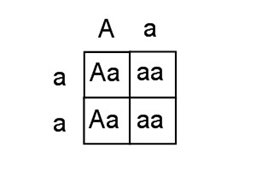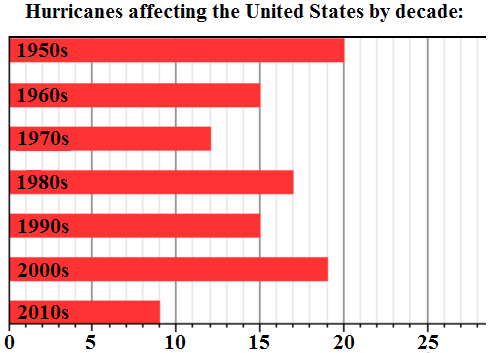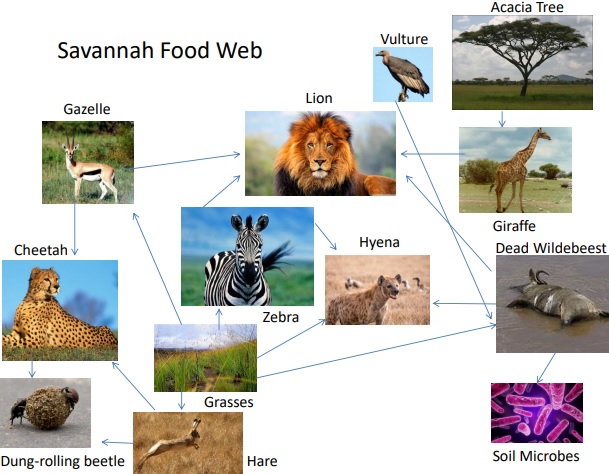This is the first of our four GED Science practice tests. The 2024 GED Science test includes challenging questions that require you to read complex scientific texts, evaluate charts and graphs, and use evidence to make inferences. To prepare for this you will want to work through as many practice questions as possible. Get started with your test prep right now with this free GED Science practice test.
Directions: Choose the best answer to each question.
Congratulations - you have completed .
You scored %%SCORE%% out of %%TOTAL%%.
Your performance has been rated as %%RATING%%
Your answers are highlighted below.
Question 1 |
Genetically modified crops and livestock offer the possibility of greater yield and food quality, reductions in pesticide use, and higher profits for agricultural businesses. They are viewed by some as a way to help reduce world hunger by increasing food production and reducing losses to pests and varying environmental conditions. Each year, industrial agriculture relies more heavily on genetically modified crops. There are some concerns about our increasing use of genetically modified crops and livestock, including their safety for human consumption and their effects on the environment.
Based on the passage above, if genetically modified crops were to be banned, what could be the largest negative impact to humans?
Introduction of new allergens into the food supply | |
Loss of genetic diversity in food crops | |
Decreases in food production worldwide | |
Increase in the amount of beneficial insects |
Question 1 Explanation:
The passage indicates that genetically modified crops offer the possibility of greater crop yield. If genetically modified crops were to be banned, the conclusion is that there would be less food available.
Question 2 |
Battery companies make impressive claims about how long their batteries will last. A student decided to test the running time of different batteries to determine which battery lasts the longest. The student tested 6 different batteries, 4 brand name and 2 generic, using flashlights. The results show that the battery referred to as Name Brand A lasted the longest, with 101 hours of runtime:


It could be argued that this experiment was not set up using proper experimental protocol. What would need to change in the experiment for the results to be valid?
The batteries should have all been either name brand or generic | |
Only two groups should have been tested at a time | |
The same battery should have been used in each flashlight | |
The same flashlight should have been used to test each battery |
Question 2 Explanation:
In an experiment, only one variable can be tested. Therefore, the type of flashlight should remain the same for each battery that is being tested, since the point of the experiment was to test the claims made by battery companies.
Question 3 |

The square above is based on the eye color of two parents. One of the parents has brown eyes and carries the recessive gene for green eyes (a). What is the probability that a biological child of these parents will have brown eyes?
0% | |
25% | |
50% | |
100% |
Question 3 Explanation:
It is given that the recessive gene for green eyes is the allele ‘a,’ and that one parent has brown eyes while also carrying the recessive green eye allele. This means that the dominant gene (A) gives brown eyes. Inspection of the square shows that half of the children will have green eyes (aa), and half of the children will have brown eyes (Aa).
Question 4 |
Below is the chemical equation for photosynthesis:
Which of the following statements about photosynthesis is correct?
When 6 molecules of carbon dioxide are used, 1 molecule of oxygen is produced | |
When 1 molecule of water is used, 1 molecule of glucose is produced | |
When 6 molecules of water are used, 1 molecule of glucose is produced | |
When 1 molecule of glucose is produced, 12 molecules of oxygen are used |
Question 4 Explanation:
The reactants are on the left side of a chemical equation and the products are on the right side. In photosynthesis, 6 molecules of carbon dioxide react with 6 molecules of water (in the presence of sunlight) to produce 1 molecule of glucose and 6 molecules of oxygen.
Question 5 |
Wavelengths are measured in nanometers (nm). Each color on the visible spectrum has a different wavelength. The human eye is only able to distinguish wavelengths between 400-750 nm. The approximate wavelengths of the visible spectrum are shown below:


If you were reading a scientific report, and it referred to a wavelength of 455 nm, which color would it be referring to?
Violet | |
Ultraviolet | |
Blue | |
Green |
Question 5 Explanation:
You can approximate the wavelength of blue by looking at the diagram and estimating that it has a wavelength just above 450, midway between 400 and 500 nm.
Question 6 |

What is the median of number of hurricanes per decade?
15.29 | |
15.5 | |
15 | |
17 |
Question 6 Explanation:
The "median" is the "middle" value in the list of numbers. To find the median, your numbers need to be listed in numerical order from smallest to largest. First list out the number of hurricanes that occurred in each decade:
20, 15, 12, 17, 15, 19, 9
Then put them in order:
9, 12, 15, 15, 17, 19, 20
There are 7 numbers total, which means that the 4th number is the one in the middle. The 4th number is 15, so 15 is the median.
20, 15, 12, 17, 15, 19, 9
Then put them in order:
9, 12, 15, 15, 17, 19, 20
There are 7 numbers total, which means that the 4th number is the one in the middle. The 4th number is 15, so 15 is the median.
Question 7 |

What is the mode of this data set?
15 | |
11 | |
16 | |
17 |
Question 7 Explanation:
The "mode" is the value that occurs most often. The number 15 occurs twice in this data set. All other numbers occur only once, so the mode is 15.
Question 8 |

What is the range of this data set?
15 | |
11 | |
20 | |
9 |
Question 8 Explanation:
The range of a set of data is the difference between the highest and lowest values in the set. The highest value is 20 and the lowest value is 9, so the range is:
20 − 9 = 11
20 − 9 = 11
Question 9 |
In an ecosystem, producers convert the sun’s energy into a usable source for other organisms. Primary consumers eat the producers, secondary consumers eat primary consumers, and tertiary consumers eat secondary consumers. Some organisms eat more than one type of organism in the food web. Look at the food web below. Notice that the lion is both a scavenger and a secondary consumer. Thus, they may fill more than one role in the ecosystem.


Which of the following organisms fill more than one role in this ecosystem?
Giraffe | |
Hyena | |
Cheetah | |
Dung-rolling beetle |
Question 9 Explanation:
The hyena is a primary consumer (eats grass), a secondary consumer (eats the zebra) and a scavenger (eats the dead wildebeest).
Question 10 |
In an ecosystem, producers convert the sun’s energy into a usable source for other organisms. Primary consumers eat the producers, secondary consumers eat primary consumers, and tertiary consumers eat secondary consumers. Some organisms eat more than one type of organism in the food web. Look at the food web below. Notice that the lion is both a scavenger and a secondary consumer. Thus, they may fill more than one role in the ecosystem.


If additional cheetahs were introduced into this ecosystem, shortly thereafter we would expect a decrease in the:
lion population | |
hyena population | |
dung-rolling beetle population | |
hare population |
Question 10 Explanation:
Arrows are pointing from hares and gazelles to cheetahs. This indicates that cheetahs eat hares and gazelles. Adding more cheetahs would quickly cause a decrease these populations. Predicting the long-term effects would be more challenging.
Question 11 |
As part of a chemistry experiment, 1025 milliliters of water is mixed into a beaker that contains 175 milliliters of motor oil.
(1 liter = 1000 milliliters)After adding the water, how many liters of liquid are in the beaker?
1200 | |
1,200,000 | |
1.2 | |
0.12 |
Question 11 Explanation:
First add the two amounts of liquid:
1025 + 175 = 1200 mL
To convert milliliters to liters, divide by 1000:
1200 ÷ 1000 = 1.2 L
1025 + 175 = 1200 mL
To convert milliliters to liters, divide by 1000:
1200 ÷ 1000 = 1.2 L
Once you are finished, click the button below. Any items you have not completed will be marked incorrect.
There are 11 questions to complete.
|
List |
Next Test:
GED Science Practice Test 2 >>
